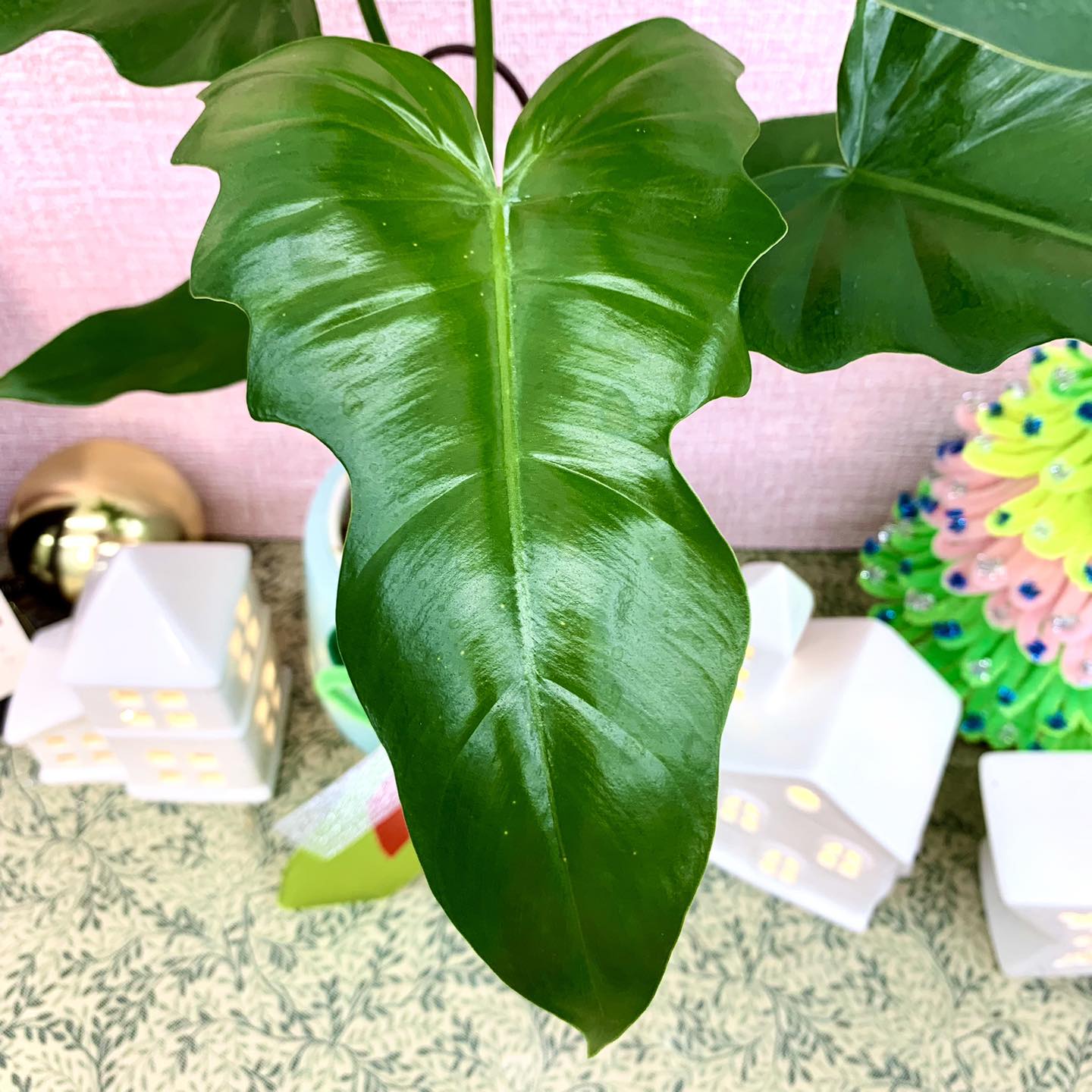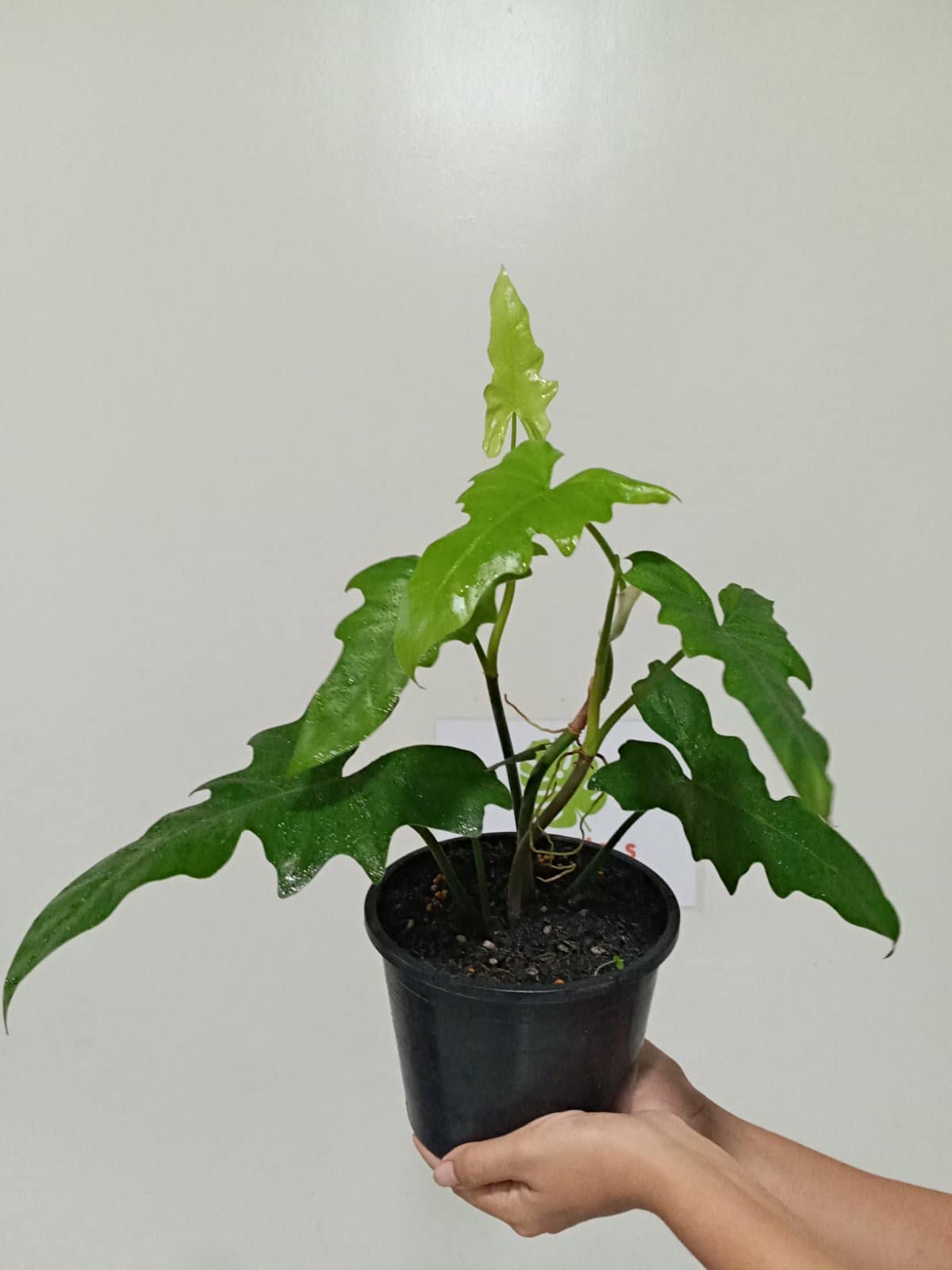Basic Information
There are other names for the Philodendron Dragon line, such as Philodendron Green Dragon and Philodendron Golden Dragon, but these two names actually refer to the same species of Philodendron. The only difference between them is their color, with Green having a distinct blue shade and Golden having a more sparkling color. This difference is more noticeable when they are in sunlight, and it’s an important factor in distinguishing between the two. If you want your Philodendron Dragon to have a specific color, make sure to pay attention to the amount of light it requires when taking care of it.


Light
The Philodendron Dragon plant thrives in bright, indirect sunlight. It can also tolerate medium light, but direct sunlight should be avoided to prevent leaf damage. If you have varieties with lighter leaves, it’s crucial to ensure brighter light to maintain their color. Additionally, the plant may become leggy due to insufficient light, so providing adequate lighting is essential. The plant does well near east or west-facing windows where it can receive bright, indirect light for a few hours every day. If needed, you can use grow lights during darker months.
Water
Determining the right time for watering your Philodendron Dragon is essential to ensure ideal growth and health. To check if the plant needs watering, you should insert your finger one to two inches deep into the soil. If the soil feels dry at that depth, it’s time to water the plant. If the soil is still damp, holding off watering for a few more days is advisable to prevent over-watering. When over-watered, roots can get flooded, and this can cause poor plant health, root rot, and, ultimately, the death of the plant.
Tip: A chopstick method or bottom watering can ensure proper moisture without overwatering by placing the plant in a tray of water for 15-20 minutes.
Soil
For the ideal potting mix, you should use well-draining, loose, and airy soil. Avoid using dense garden soil or sand alone. Instead, use a mixture of at least 25% perlite, peat moss, and vermiculite for the best aeration and drainage. Peat moss helps to retain moisture in the soil, while perlite and vermiculite improve drainage and aeration. The soil’s pH level should be between 4.5 and 6, and you can add worm castings for extra nutrients. It is essential to avoid using soil that holds too much moisture, as it can lead to root rot.
Tip: Terracotta pots are highly recommended because they absorb moisture.
Temperature
It is recommended to maintain a temperature range of 65°F to 80°F (18°C to 27°C) for the plant. It is important to protect the plant from drafts and sudden temperature fluctuations. If the temperature drops below 57°F, it is necessary to bring the plant indoors. Also, ensure the leaves are kept away from any home heat registers or air vents.
Humidity
Philodendron Dragon is a plant that is well-suited for rainforest environments. It requires moderate to high humidity levels, ideally between 40% and 60%. To increase the humidity around the plant, you can use methods such as a humidifier, mist the plant, or place it on a tray of wet pebbles.
Fertilizer
For the best results, using a fertilizer with an N-P-K ratio of either 10-10-10 or 20-20-20 is recommended. It’s important to note that using the full recommended dosage may lead to over-fertilization, so it’s better to use only half the amount suggested. Dilute the fertilizer and apply it every 4-6 weeks during the spring and summer. If you live in a cold climate, avoid fertilizing during winter when the plant grows slowly.
Growth Rate
The Philodendron Dragon is a fascinating and captivating indoor plant with unique attributes. It has large, deeply lobed leaves, resembling either a dragon’s head or a hand with fingers, and typically measures 2-3 feet long. The Philodendron Green Dragon grows continuously throughout the year without entering a dormant phase. With appropriate care, you can enjoy its growth year-round.
Pet Safety
Philodendron Dragon is toxic to pets and humans. Keep it out of reach for safety.
Grow in Semi-Hydro
- Philodendrons, celebrated for their lush foliage and adaptability, thrive in semi-hydroponic systems such as LECA/Pon, thanks to their resilient root systems and preference for consistent moisture.
- Shifting a Philodendron to a semi-hydroponic setting works well using a Nutrient Stagnant Wicking (NSW) method, providing a stable and effective environment for growth.
- Within the LECA/Pon environment, Philodendron roots adapt swiftly, effectively managing any early challenges in adapting to the NSW system.
- For nourishing Philodendrons in semi-hydro systems, a nutrient solution with a concentration around 800-1000ppm is optimal.
- Philodendrons are versatile in adapting to a range of temperature and humidity levels, making them ideal for various indoor settings.
- Regular care involves keeping an eye on the water level in the reservoir and periodically flushing the system to ensure the Philodendron’s healthy and consistent growth.
- If your Philodendron is a climber, it’s a must to look at our Moss Pole guide to have a proper set-up.
Tips
- Rotate for even light exposure and use grow lights if needed.
- Water judiciously, using the chopstick method or bottom watering.
- Employ a well-draining soil mix with slight acidity.
- Maintain warm and humid conditions.
- Fertilize regularly but avoid over-fertilization.
- Support its climbing nature and repot when necessary.
- Keep the plant out of reach of pets and children due to its toxicity.
- Watch for signs of overwatering like yellow leaves, and adjust accordingly
Following these detailed guidelines, your Philodendron Dragon will thrive and bring tropical beauty to your indoor garden.
Happy planting! 🌱


